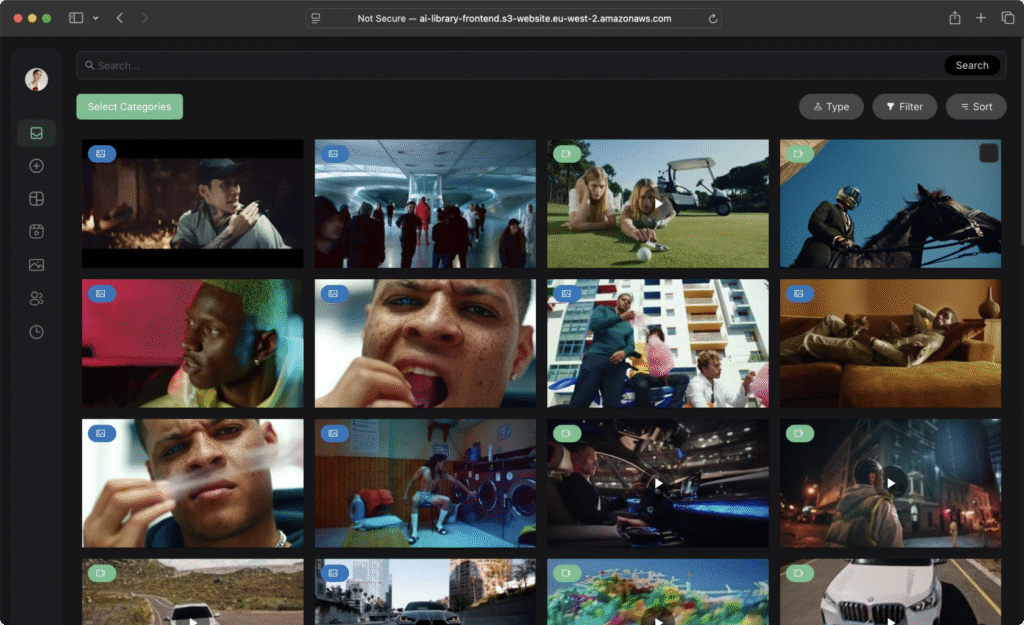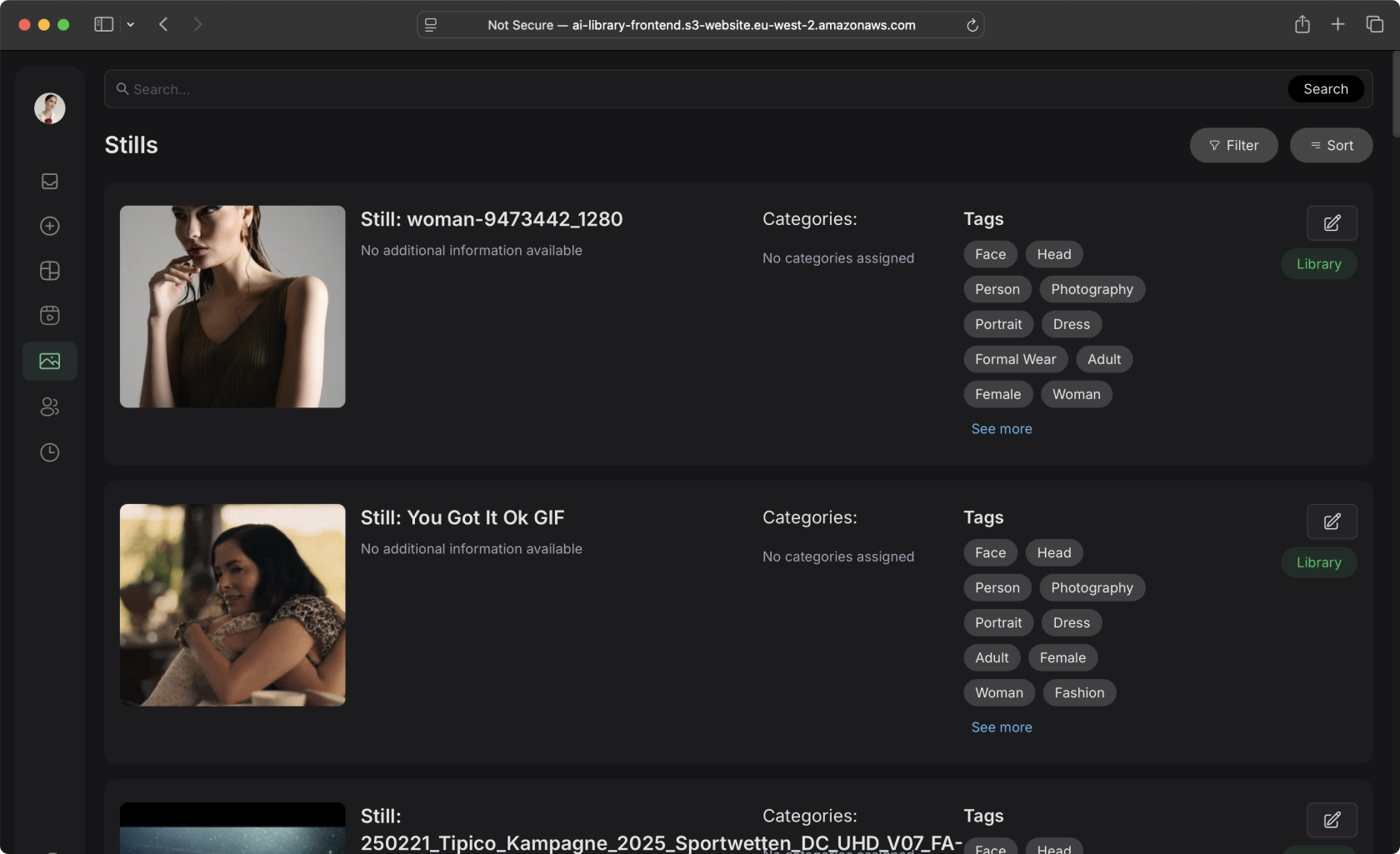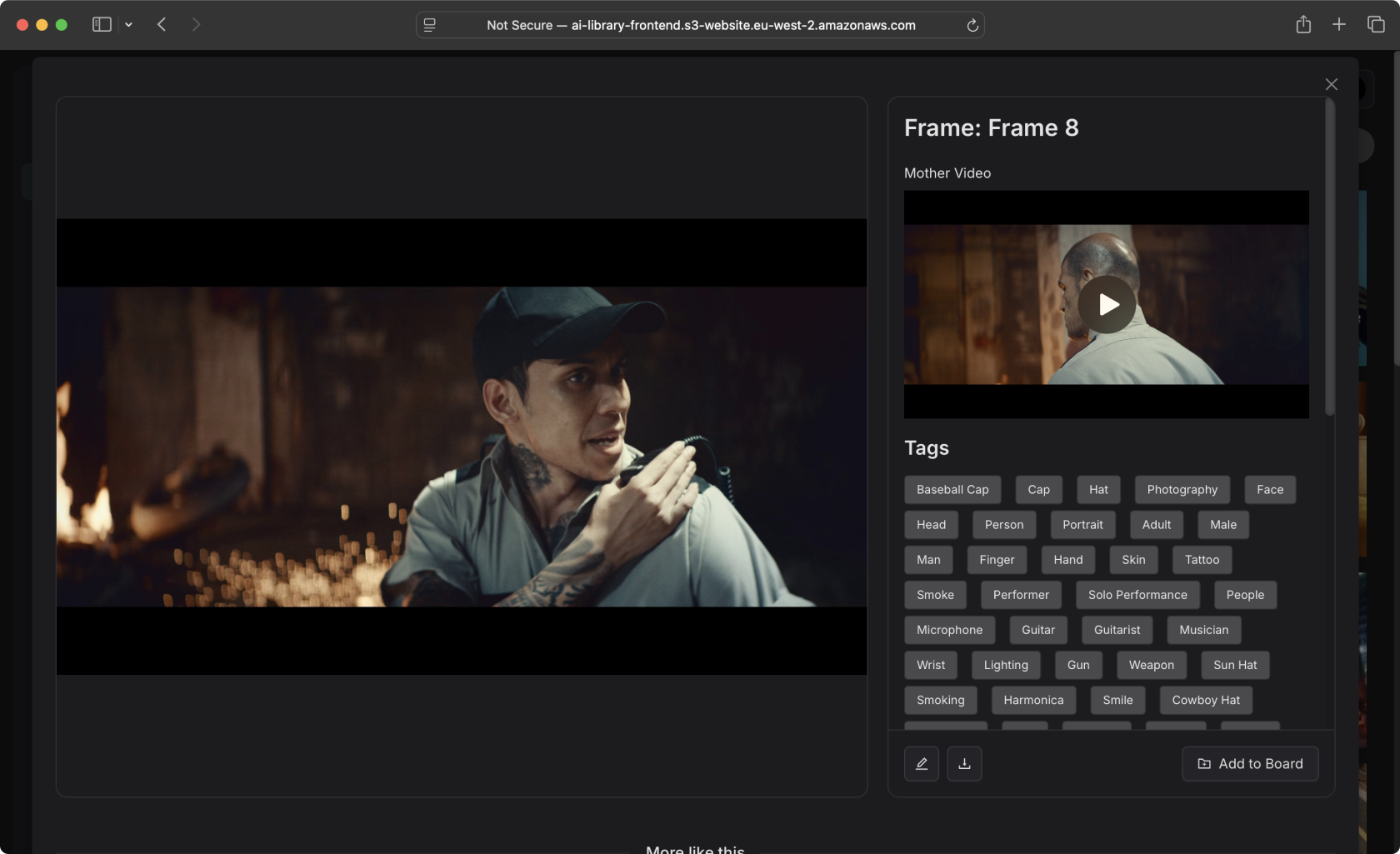
AI Library
Outline
LogicLeaps partnered with a forward-thinking media tech initiative to develop AI Library — an intelligent platform for managing, tagging, and organizing GIFs and images at scale. Designed for creators, teams, and businesses, the platform leverages AI to automate content tagging, streamline search, and enable timeline-based exports of visual media.
Challenges Faced by AI Library
AI Library set out to solve several critical pain points in visual content workflows:
Manual Tagging Limitations: Managing large collections of visuals was inefficient and error-prone.
Scattered Workflows: Users had no unified space to store, tag, and search content effectively.
Poor Discoverability: Traditional search methods made it difficult to find visuals based on content or context.
Lack of Metadata Structure: There was no intelligent system to associate visuals with meaningful, searchable labels.
These challenges highlighted the need for a centralized, AI-enhanced solution to streamline visual asset management.



LogicLeaps Impactful Solutions
AI-Driven Tagging
Integrated AI tools to automatically detect objects, scenes, and visual elements
Generated intelligent tags and labels, reducing manual effort and improving accuracy
Centralized Library
Allowed users to upload and store a high volume of visuals
Included manual tagging, folder organization, and project-based grouping
Semantic Search & Visual Discovery
Enabled users to locate visuals using keywords, AI-generated tags, and related suggestions
Improved discoverability and reduced time spent searching for the right content
Impact
Faster Organization: Automated tagging eliminated hours of manual work
Smarter Search: Semantic and tag-based search dramatically improved content retrieval
Creative Efficiency: Users could focus on using content instead of managing it
Scalable System: The platform efficiently handled growing media libraries for individuals and teams


Conclusion
LogicLeaps delivered a powerful, intelligent visual content library through the AI Library platform. By automating tagging, centralizing content, and enhancing search capabilities, the platform empowers users to manage visuals with speed, clarity, and confidence setting a new standard in digital content organization.